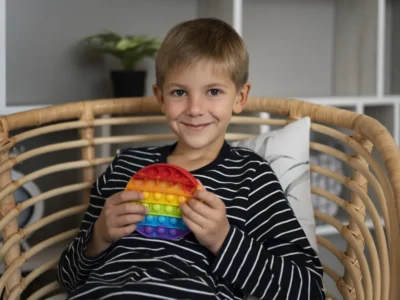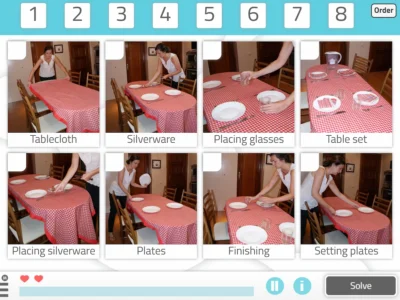Today we present two new games that help improve selective attention in adults: Twin Shapes and Color Matching.
What do these activities consist of?
We will explain separately what these two activities consist of:
Twin Shapes
The Twin Shapes game aims to identify and match the geometric figures on the screen that are identical.
When we select one of the geometric figures, it will be highlighted in blue and, if we have selected the correct pair, it will be highlighted in green.
In this video we explain how to play.
Color Matching
In the Color Matching activity the user will aim to recognize figures that share the same color and pair them.
Figures with different colors will appear on the screen; the user will have to recognize and identify those colors that are identical and select them.
As in the previous activity, when we select one of the figures, it will be selected with a blue border
In the following video we show you how to play:
What do these activities target?
Both the Twin Shapes activity and the Color Matching activity primarily train selective attention, while the user can also practice visual recognition skills.
How do they do it? In both activities the user has to pay attention to a specific element, either color or shape, trying to ignore the other distractors on the screen.
Play by levels
As with all NeuronUP games, you can choose the phase (the difficulty level). In these activities there are six different phases.
The first phase is the easiest and the sixth the most difficult.
The user will move up or down levels automatically according to their correct or incorrect answers. Additionally, the professional can select the phase manually.
Activity configuration
Both Color Matching and Twin Shapes have the default configuration with time:
- They have a maximum time limit,
- they do not have a visible timer,
- 5 exercises to move up a level,
- 3 exercises to move down a level.
Application in daily life
Twin Shapes has ecological validity that lies in its application to everyday situations that require quick and precise visual discrimination. For example, locating keys in a drawer full of objects or recognizing symbols on screens.
Moreover, by training attention to focus on shape while excluding the figure’s color, it promotes much more precise and flexible attention, with potential benefits for people with concentration difficulties or undergoing cognitive rehabilitation.
Meanwhile, Color Matching, by stimulating selective attention and color discrimination, enhances the ability to ignore irrelevant stimuli and respond quickly to meaningful visual cues, giving it high ecological validity.
This type of activity can be applied to tasks such as driving, since it is necessary to accurately distinguish colors in the lights of traffic signs or traffic lights.
If you liked this post about the new selective attention game for adults, you might also be interested in:
“This article has been translated. Link to the original article in Spanish:”
Juegos de atención selectiva para adultos: Formas gemelas y Emparejamiento de colores







 University Education in Cognitive Health: Toward a Practical, Digital Education Connected to Clinical Reality
University Education in Cognitive Health: Toward a Practical, Digital Education Connected to Clinical Reality
Leave a Reply